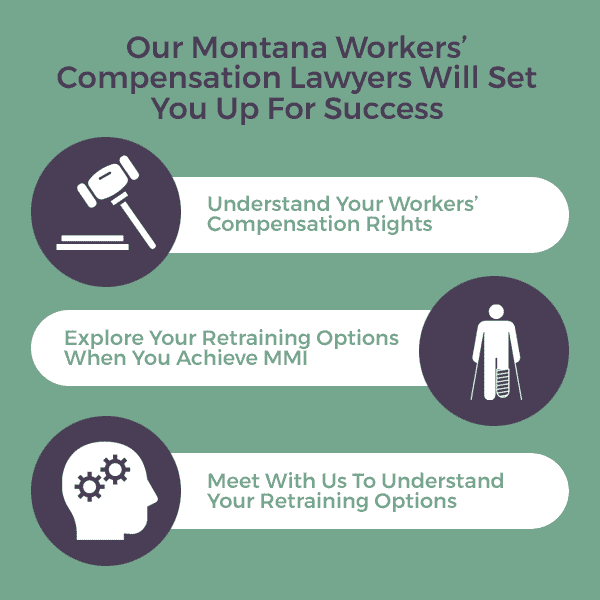Will workers' compensation retrain me for a different job?
This is one of the most common questions we hear from people who were injured while working in Montana.
All Articles
Posted: 08/17/2020
Workers Compensation Workplace Injury

Unfortunately, the answer is not always straightforward.
Job retraining, or "vocational rehabilitation" is one of the best benefits that is potentially available to an injured worker. However, not everyone qualifies and workers who do qualify might not even know that retraining is an option.
Understanding your workers'compensation rights is important for filing a claim. There are two ways that an injured worker can qualify for vocational rehabilitation benefits under Montana workers' compensation law. A worker can qualify for a vocational rehabilitation plan if he or she meets the definition of a "disabled worker" under the statute. In addition, any injured worker who has received an impairment rating greater than 15% will also qualify.
Determining Disability / Maximum Medical Improvement
A person is considered disabled if they have a permanent impairment that prevents them from returning to their time of injury job, and the other jobs that are available to them do not pay as much. One of the drawbacks of this system is that people who have serious injuries might not know the extent of their permanent impairment for a long period of time.

A determination about permanent impairment is not made until the injured worker achieves Maximum Medical Improvement, or "MMI." In the case of a serious injury, it might take months or even years for a worker to achieve MMI. Although a person who is off work because of an injury might be anxious to start retraining for a better career, an injured worker who wants to begin training for a new job before he or she is fully healed will likely encounter resistance from the insurance company.
In certain circumstances, a person who is injured at work can qualify for retraining and other permanent benefits even if they are still able to perform their time of injury job, or if the employer has modified the job or provided alight-duty position.
Vocational Rehabilitation
It is our experience that workers' compensation insurance companies will rarely tell a worker if they qualify for retraining. Often, insurance companies will pressure an injured worker to settle their claim as soon as MMI is reached, knowing that the price of a settlement may be less than the cost of a rehabilitation plan. If an insurance company does tell a worker that they qualify for rehabilitation benefits, they will often try to direct the injured worker to a low cost "job placement" option, rather than a legitimate educational program.
The injured worker's vocational plan has to be reasonable, and the worker will generally have to demonstrate that he or she will earn more once their education is complete. It has to be possible to complete the plan in less than 2 years, and the plan must be started within 78 weeks (18 months) of reaching Maximum Medical Improvement. It is crucial that the injured worker file a timely workers compensation claim to begin the process of receiving the benefits that they deserve. If those standards are met, an injured worker who qualifies can pursue the career path of their choice.
If you are granted vocational rehabilitation benefits, it's possible to get a two-year Associate's degree in nursing, automotive technician, or business administration, for example, or pursue a trade school such as cosmetology, heavy equipment, commercial drivers' license, or real estate — just to name a few. Workers' compensation can be required to pay for tuition, fees, books and other expenses, as well as pay a stipend directly to the worker for living expenses while attending school.
Don't Let an Injury Hold You Back
If you have been injured at work, you may have to fight to obtain the vocational rehabilitation benefits you are entitled to. Our workers' compensation lawyers at Odegaard Injury Lawyers have experience dealing with Montana workers' compensation insurance companies and are able to advise you about any benefits you may be entitled to. If you are hurt at work, competent legal representation can help you make the best of a bad situation. Contact us for a free consultation.
Sign Up for More!
Join our community and subscribe! Sign Up for Exclusive Legal Articles and Resources.